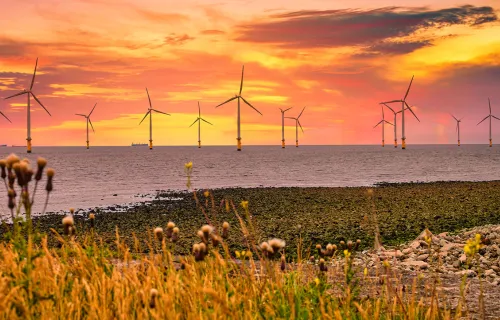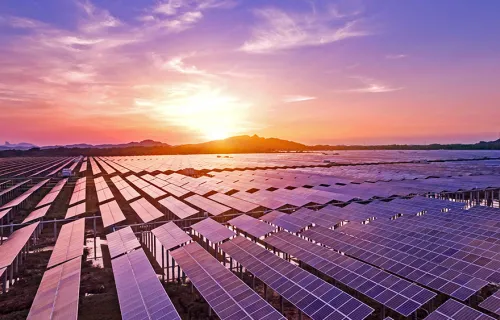This article from the February 2021 issue of the Renewables Management System (RMS) newsletter, shares insights on the changing energy paradigm and the need for technology that uses real-time information to manage the renewable asset portfolio.
Author: Jose Antunes, Vice-President, Consulting Services, Renewables & Smart Grids
In 2021, we expect to see a keen focus on government and industry commitments to the energy transition. Of course, an essential pillar to accelerate this transition is renewable energy, particularly as it gains prominence with continued improvements in efficiency and profitability.
Recent studies indicate solar and wind energy are the cheapest new energy to produce. This cost efficiency differential will tend to increase with further innovation. For example, although wind turbines have an average installed capacity of 2 MW, a late-generation offshore wind turbine has a capacity above 10 MW and a higher efficiency rate, and this too will improve with further innovation.
The complexity of managing renewable energy processes has increased exponentially, moving from a centralized model to a distributed model with significant fluctuation in production.
Is there sufficient wind to generate more production? What about the Sun?
Another fundamental element of the changing energy paradigm is the entry of micro-producers. As an example, 40,000 homes in Portugal are already connected and producing electricity to the grid. Batteries for domestic storage are following this growing trend, fueled by the sharp drop in the price of facilities, even at the residential level.
Network operators will have to manage this evolution to achieve both stability in production and the availability to respond to fluctuations at both ends of the spectrum: production and consumption. It is no longer enough to increase production, which was relatively simple in traditional power plants. This is because a moment of increased production in wind or solar power plants can happen in a period of decreased demand, and vice versa. As a result, the entry of production into the network must be managed. With some regularity, Portugal already has operated for periods entirely on renewables for its electrical production.
The answer to managing such challenges lies in technology. The technology must obtain real-time information from different production units (renewable and non-renewable), map the data to needs in real time, ensure proactive and preventive maintenance cycles, and manage network entry and exit to ensure stability. New technologies, such as Internet of Things and sensors for transmitting information on the use of assets, along with artificial intelligence and machine learning to anticipate scenarios and improve levels of effectiveness, are essential components of a solution to address the complexity of this challenge.
The solution must enable the management of the renewable asset portfolio, from solar to wind and water, with maximum efficiency and use of available assets. It also must be scalable to allow easy integration of new assets and optimization of their use. Finally, given the diversity of systems, it is essential that such a management system be capable of interconnecting and obtaining data from the most diverse systems, while ensuring a two-way connection that allows its management.
The future of energy is distributed, with low emissions, integration of new concepts such as storage, and significant production fluctuations. RMS Technology will make this future more predictable, manageable and integrated.




